Kraków is a major academic and research centre in Poland, its academic traditions going back to the 14th century. As the former capital of Poland and currently one of its biggest cities, situated in southern Poland in the vicinity of the Tatra Mountains, it is a great place to live, work or study. With its 24 institutions of higher education and nearly 100 research institutes, Kraków attracts numerous students and researchers. It is also home to various companies, institutions and museums. The city’s historic centre, chosen for the first UNESCO World Heritage List in 1978, welcomes ca. 12 million tourists a year. Since the last decade Kraków has become one of the most appreciated tourist destinations in Europe.
Kraków in numbers in 2021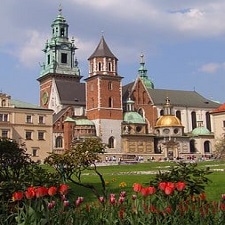
- 782,137 inhabitants
- 129,200 students (in 2020/21)
- 6,040,000 tourists (a pandemic year)
- nearly 7,500 historic sites
- 428 restaurants
- 290 pubs and clubs
- over 100 sport facilities
- nearly 250 km bike lanes
- 54 museums
- more than 60 parks, woods, gardens
- 24 institutions of higher education
- 12 theatres and the Krakow Opera
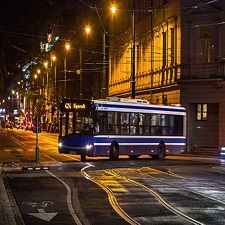
Kraków boasts a comprehensive and easy-to-use public transportation system though there is no underground in the city. Some visitors will not even find it necessary as most attractions are within easy walking distance from one another (not to mention walking is one of the best ways to enjoy the city).
Kraków’s integrated bus and tram system operates from early morning to late evening, with night trams and buses continuing less frequently after that. Check timetables and network maps online at mpk.krakow.pl or figure out how to get from point A to point B via krakow.jakdojade.pl – an invaluable navigation site and transport app.
Transport tickets can be purchased from the handy ticket dispensing machines at major stops, and on board most trams and buses. Note that not all ticket machines take bank cards, so it is wise to have some change handy. Cashless transactions via mobile applications, e.g. SkyCash or MoBILET, are also available.
Tickets are the same for trams and buses and are timed, allowing you to change between tram or bus lines within the allowed time. The cheapest current fare is good for a 20-min journey at a cost of 4 PLN. By our estimation, this is about the time it should take to go 5–8 stops, depending on traffic, and ideal for travel around the Old-Town, Kazimierz and Podgórze. If you are going outside the centre (Nowa Huta, for example), we recommend purchasing a 60-min ticket or a 90-min ticket (you can change trams/buses many times). If you know that you will need to travel by public transport, we suggest buying time tickets: 24, 48 or 72 hours. And if you are coming for a longer period of time, one of the options is to buy a ticket for the whole week or month, or consider the Kraków tourist card, which includes unlimited free travel on trams and buses amongst its benefits. Note that those over the age of 70 travel for free, as do kids under the age of four (ages must be proven with ID).
Types of tickets and their prices
- 20 min – 4.00 PLN
- 60 min – 6.00 PLN
- 90 min – 8.00 PLN
- 24 hour – 17.00 (zone I) / 22.00 (zone I+II+III) PLN
- 48 hour – 35.00 PLN
- 72 hour – 50.00 PLN
- 7 days (zone I) – 56.00 PLN
- 7 days (zone I+II+III) – 68.00 PLN
- unlimited weekend family ticket – 25.00 PLN
You must validate your ticket immediately on boarding the tram or bus in one of the small machines on-board, even if you have bought your ticket on-board. You will be fined if you travel without a validated ticket.
Useful links
Car rental
All travellers wanting to rent a car in Poland must be 18 years of age, have a credit card (not debit) and a valid foreign driver’s licence. However, those from countries that have not ratified the Vienna Convention on Road Traffic (the United States, China, Australia) cannot legally drive on their home licences; technically, an International Driver’s License is required in those cases (in the US these are issued by AAA for a fee).
Taxis
Kraków taxis are reliable and affordable. Calling a taxi in advance will get you a better fare. If you stop one in the street make sure it is clearly marked with company name and that it has a phone number and fares legibly displayed. Taxis are now legally obliged to give you a printed receipt at the end of the journey. You can expect a standard fare to be about 7 PLN plus about 2.50 PLN per kilometre for short distances; for longer distances, at night and on Sunday, however, fares increase by up to 50%.
Alternative taxi services Uber and Bolt are also available in Poland; in fact, Uber has chosen Kraków as its European hub. Both services offer cashless transport via their popular worldwide mobile applications. Those already familiar with Uber or Bolt will find Kraków well-covered by their services. However, there are some drawbacks since Uber and Bolt drivers do not have the same permissions as regular cabbies and thus may not be able to take you as close to your destination as you may wish or they may need to take a less direct route; on the other hand, a cheaper fare is certainly an advantage.
Currency
 The Polish currency is called złoty (PLN). One złoty is divided into 100 groszy. Banknotes have the following denominations 10, 20, 50, 100 and 200, while coins: 1, 2, 5, 10, 20 and 50 groszy and 1, 2, 5 złoty. Currencies may be exchanged in numerous exchange points or in banks, located in the city centre, at the railway station, the airport, post offices and in some hotels.
The Polish currency is called złoty (PLN). One złoty is divided into 100 groszy. Banknotes have the following denominations 10, 20, 50, 100 and 200, while coins: 1, 2, 5, 10, 20 and 50 groszy and 1, 2, 5 złoty. Currencies may be exchanged in numerous exchange points or in banks, located in the city centre, at the railway station, the airport, post offices and in some hotels.
Banking services
Banks are open from Monday to Friday, a few also work on Saturdays. All banks are closed on Sundays and public holidays. Most banks have their own cash machines and there are also cash machine networks (bankomat): Euronet, Cash4YOU, Planet cash). If you have a card issued by a given bank, you may use its cash machines free of charge, whereas other card holders may have to pay a commission.
Bank cards (Visa, Maestro, etc.) can be used in most shops and restaurants (there are card logos on the entrance door). In some bigger supermarkets or chain shops, selected cash desks accept payments in euro (apart from złoty) at an exchange rate given there.
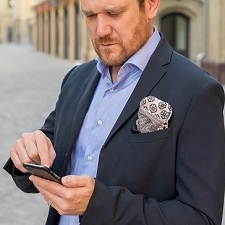 The Polish telecommunication market hosts several competitive service providers. You can easily obtain a SIM card, a reliable Internet connection and a phone line. Some companies offer combined packages including a land line, Internet and cable TV.
The Polish telecommunication market hosts several competitive service providers. You can easily obtain a SIM card, a reliable Internet connection and a phone line. Some companies offer combined packages including a land line, Internet and cable TV.
As for mobile phones, you can choose between prepaid and postpaid options. These are the main providers of mobile network in Poland: T-Mobile, Orange Polska, Play and Plus, and they are also popular options for prepaid connection services.
All new buildings, including modern museums, art galleries, shopping malls and train stations, are designed to be accessible for people with disabilities and an increasing number of older buildings are being equipped with ramps, lifts and wider doors.
Kraków is constantly becoming more and more accessible to disabled travellers and has recently undergone many changes in order to open its doors to everyone who wishes to visit this fine city. Fully accessible vans with standard seats and one-wheelchair space can be arranged for tours; a larger coach is a good option should you need more wheelchair space. Early booking is highly recommended.
The Jagiellonian University has its own Disability Support Service (DSS), a centre of educational support for persons with disabilities and in difficult health circumstances. The full offer and more information on the DSS can be found on the JU Accessibility Centre website.
Food
 bread –5.00–9.00 PLN
bread –5.00–9.00 PLN- butter – ca. 8.00 PLN
- cheese – 20-50.00 PLN per 1 kg
- 10 eggs – 8-14.00 PLN
- ham – 20-45.00 PLN per 1kg (depends on the kind of meat)
- tomatoes – 5-16.00 PLN per 1kg
- milk – ca. 3.00 PLN per 1 l
- white rice – ca. 3.00 PLN per 400g
- potatoes – 1–4.00 PLN per 1kg
- chicken meat – ca. 20.00 PLN per 1kg
- oil – 10-13.00 PLN per 1l
- mineral water – ca. 2.80 PLN per 1.5l
- coffee – 6.50-8.50 PLN per 250g
- tea – ca. 4.00 PLN per small package
- sugar – ca. 6.00 PLN per 1 kg
- juice – 3.50–5.00 PLN per 1l
Transportation
gasoline: ca. 7.00 PLN per 1L
Tickets and their prices:
- 20 min – 4.00 PLN
- 60 min – 6.00 PLN
- 90 min – 8.00 PLN
- 24 hour – 17.00 (zone I) / 22.00 (zone I+II+III) PLN
- 48 hour – 35.00 PLN
- 72 hour – 50.00 PLN
- 7 days (zone I) – 56.00 PLN
- 7 days (zone I+II+III) – 68.00 PLN
- unlimited weekend family ticket – 25.00 PLN
Flat renting (monthly prices)
- one-room bedsit/studio – 1,800-2,500 PLN
- two-or three-room apartment – ca. 2,500-3,500 PLN (up to 4,500 PLN in the city centre)
- 997 Police
- 998 Fire Brigade
- 999 Ambulance
- 986 Municipal Police
- 112 European Emergency Number
Emergency calls are free of charge and can be made from any phone, including pay-phones and mobile phones of any service provider (incl. foreign) everywhere in the EU.
112 is your life-saving number that will get you straight through to the emergency services – police, ambulance, fire brigade.
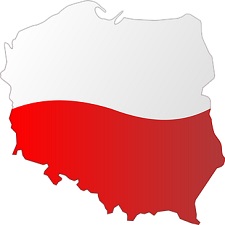
Official name
The Republic of Poland, short form: Poland (Rzeczpospolita Polska, Polska)
Location
Central Europe, bordered by Germany to the West, the Czech Republic and Slovakia to the South, Ukraine, Belarus, Lithuania to the East, and Russia and the Baltic Sea coast to the North
Capital City
Warsaw (Warszawa)
Major Cities
Kraków, Łódź, Wrocław, Poznań, Gdańsk, Szczecin, Bydgoszcz, Lublin, Katowice, Białystok
Official Language
Polish
Political System
Parliamentary Republic (multi-party democracy with a two-chamber parliament and a president)
Area
312,685 km2; Poland is the ninth largest country in Europe
Population
38 million
Time zone
Central European time zone – (GMT + 1 hour/UTC + 1 hour)
Currency
1 złoty (PLN) = 100 groszy
Religion
ca. 90% of Poles are Roman Catholics
Dialling Code
+48
Weather
As the climate is moderate, the weather patterns can vary. The warmest months are: June, July and August (with average temperatures ranging from 19°C to 32°C), while the coldest: January and February (average temperatures: -15°C to 5°C).
Holidays
- 1st January – New Year
- 6th January – Epiphany
- March/April – Easter Sunday and Easter Monday
- 1st May – Labour Day
- 3rd May – Constitution Day
- May/June – Corpus Christi (Thursday of the ninth week after Easter)
- 15th August – Feast of the Assumption
- 1st November – All Saints’ Day
- 11th November – Independence Day
- 25th–26th December – Christmas Day and Boxing Day
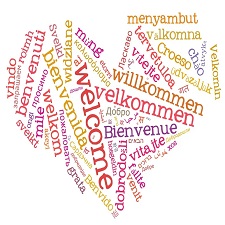 The Polish language is spoken by around 38 million citizens living in Poland and several million Poles living abroad. Polish ranks 17th among world languages as to the number of speakers.
The Polish language is spoken by around 38 million citizens living in Poland and several million Poles living abroad. Polish ranks 17th among world languages as to the number of speakers.
Polish belongs to the Slavic (Slavonic) group of Indo-European languages. They are divided into three subgroups: East, West, and South, which together constitute more than 20 languages. The current geographic distribution of natively spoken Slavic languages includes Southern Europe, Central Europe, Balkans, Eastern Europe, and all the way from Siberia to the Russian Far East. The number of speakers of all Slavic languages together was estimated to be 315 million at the turn of the twenty-first century; it is the largest ethno-linguistic group in Europe.
Polish is written with the traditional 32-letter Polish alphabet, which has nine additions to the letters of the basic Latin script (ą, ć, ę, ł, ń, ó, ś, ź, ż). The set is composed of 23 consonants and 9 written vowels, including two nasal vowels.
The letters q, x and v do not exist in the Polish alphabet; they are used only in borrowed words. The stress in a Polish word generally falls on the second-to-last syllable, although there are exceptions.
Polish grammar in brief: three tenses (past, present, future), two numbers (singular and plural), three genders (masculine, feminine, neuter). Polish is a highly-inflected language. There are seven cases for nouns, defining their usage in a sentence. Adjectives agree with nouns in terms of gender, case and number. Verbs are of imperfective or perfective aspect. There is a different conjugation (inflection) of verbs for each tense, gender, etc. There are no articles. Subject pronouns are often dropped. Word order is relatively free. Double negation is used.
Polish language courses
The JU School of Polish Language and Culture is one of the most prestigious providers of Polish language and culture education in Poland. The School offers a wide variety of in-class and online courses, both intensive and non-intensive, as well as individual courses, summer schools, camps and examinations. Check the full offer at the School website.
Polish for Foreigners - teaching materials
więcej o Polish for Foreigners - teaching materials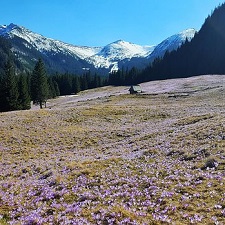 Poland’s climate can be described as temperate with relatively cold winters and warm summers, which is greatly influenced by oceanic air currents from the west, cold polar air from Scandinavia and Russia, as well as warmer, sub-tropical air from the south.
Poland’s climate can be described as temperate with relatively cold winters and warm summers, which is greatly influenced by oceanic air currents from the west, cold polar air from Scandinavia and Russia, as well as warmer, sub-tropical air from the south.
In winter, polar-continental fronts often dominate, bringing cold, frosty weather with temperatures far below zero and sometimes heavy snowfall. The late summer and autumn months are often influenced by dry, sub-tropical, continental air mass that brings plenty of warm days. The average annual air temperature in Poland is 9°C, the annual rainfall is 500–700 mm, of which snow constitutes only 5–20%.
The Polish coast is almost entirely sandy. Are you a beach lover? Do not miss the unique Hel Peninsula, a long and small bit of land and a summer paradise at the same time. However, Hel has got much more to offer: here you will find a seal aquarium, several military objects from World War II and a lighthouse.
You certainly do not associate Poland with deserts, do you? Well, do not be surprised to encounter such extraordinary natural environments in our country. A two-hour drive from Gdańsk one can easily find wandering sand dunes. Near the summer resort of Łeba you will get a chance to feel a little bit like in Africa – however, the temperatures are definitely much friendlier.
The north-eastern part of Poland is well-known for its lakes. The Great Masurian Lakes offer you countless tranquil spots where you will easily get a chance to admire the beauty of nature. Poland’s largest lake, Śniardwy, is located there.
Plateau mountains? Yes, we have got them in Poland as well. The Stołowe Mountains are covered with luscious forests and the local birdlife attracts many birdwatchers. But the key factor is stunning views.
The highest mountains are the Tatras. Located south of Kraków, the Tatras and their most popular ski resort Zakopane astonish with their character and fantastic views. It is worth seeing Morskie Oko, a lake hidden amongst the mountain tops.
A different type of Polish mountains is the Bieszczady, often referred to as Poland’s wildest mountain range. They are perfect for hikers, longing for wild nature. There you can even meet wolves and bears, and if you do not need wi-fi or spa to be happy, the Bieszczady are the place to be!
